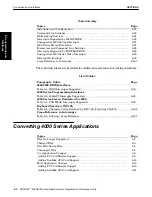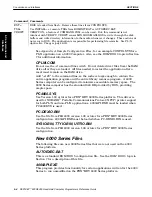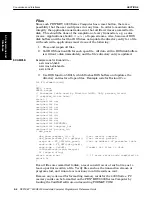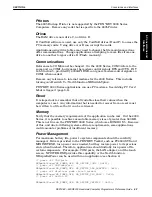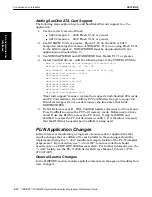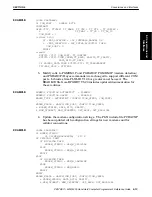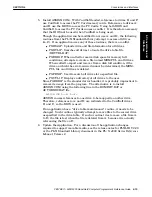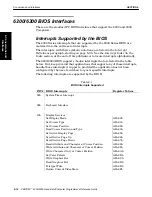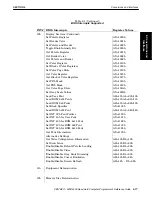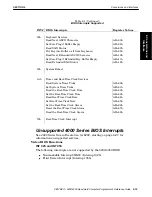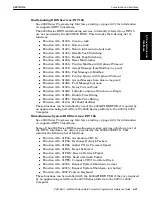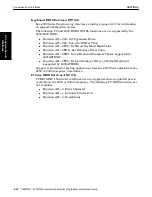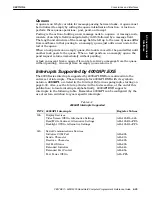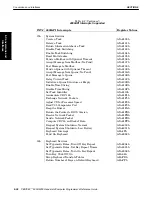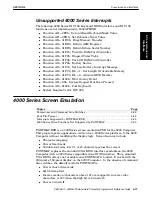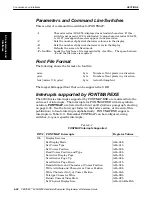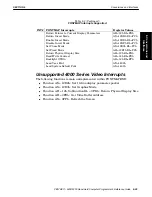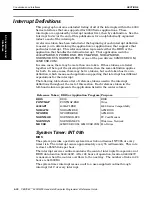
SECTION 6
Conversions and Interfaces
PEN*KEY
R
6200/6300 Hand-Held Computer Programmer’s Reference Guide 6-15
5. Install ASSIGN.COM. With CardSoft loaded, references to drives E: and F:
use CardSoft to access the PC Card memory cards. References to drives A:
and B: use the BIOS to access the PC Cards. Using both BIOS and
CardSoft to access the PC Cards causes a conflict. It is therefore necessary
that the BIOS not be used when CardSoft is being used.
Though the application can be modified to not use A: and B:, the following
routines from the PL/N Standard Library attempt to access all drives
(AćZ). If an application uses any of these routines, there is a conflict.
"
PGDIAGP: Uploads drive and file information for all drives.
"
PGDTL1P: Searches all drives to locate the drive table file
(DRVTBL.DAT).
"
PGERR1P: When called to reserve disk space for memory full
conditions, attempts to create a file named MEMFUL on all drives.
When called to report and recover from a disk full condition, if the
drive on which the error occurred cannot be determined, the MEMĆ
FUL file on all drives is deleted.
"
PGFEX1P: Used to search all drives for a specified file.
"
PGUTL1P: Displays a directory of all drives to the user.
Since PGERR1P is the standard error handler, it is probably impractical to
remove its usage from the program. The alternative is to install
ASSIGN.COM using the following line in the ROMINIT.BAT or
AUTOEXEC.BAT file:
ASSIGN.COM A:=E: B:=F:
ASSIGN causes references to one drive to be mapped to another drive.
Therefore, references to A: and B: are redirected to the CardSoft drives
E: and F:, so the BIOS is used.
If an application has a drive table maintenance" routine, it needs to be
changed. Such routines typically attempt to move files to the correct drive
as specified in the drive table. If such a routine tries to move a file from A:
to E:, the file is lost when the file is deleted from A: because it is actually
referencing the file on E:.
6. Update the Application. For a discussion of the application changes
required to support movable media, see the release notes for PLNLIB V2.20
or the PL/N Standard Library document in the
PL/N 4000 Series Reference
Manual, Volume 2.
6. Conversions and
Interfaces


